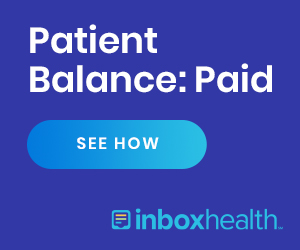Managing a self-insured health plan is fraught with trials as employers struggle to provide valuable and affordable healthcare benefits to their employees and families. One of the largest challenges employers face in administering their health plan is managing the pharmacy benefit manager (PBM) service provider.
PBMs are necessary for most employers as they provide services not typically possible for the employers themselves. But the latest survey of employers conducted by the National Alliance of Healthcare Purchaser Coalitions (National Alliance) and its member coalitions revealed that consistent with surveys over the last four years, more than eight out of 10 employers consider drug prices, high-cost claims, and hospital prices to be the biggest threats to affordability, with almost 100% noting drug prices as a significant threat.
PBMs historically have misaligned business practices compared to the needs and requirements of employers to provide affordable, accessible benefits with positive health outcomes. Having worked in the employer space for many years, 12 of those leading an almost $2 billion self-insured plan covering 260,000 lives, I struggled with that misalignment and often felt like we were playing “whack-a-mole.” You believe you understand and correct one issue only to realize that the lack of transparency hides another issue to the point that it never felt like you were making progress.
The National Alliance has studied these issues and continues to shed light on and offer solutions to address the opaque business practices of PBMs to help employers better manage their PBM relationships to advance alignment.
Opaque PBM Business Practices
Historically the PBM model uses perverse financial incentives that allow them to maximize profits while obscuring actual cost of medications. PBMs negotiate significant rebates with manufacturers and while they may contract that 100% of those rebates are returned to the employer, a lack of transparency means employers are not always able to tie those rebates to actual claims. This means employers do not have a direct line of sight to the actual cost of prescription drugs. Added to that is the inconsistent pricing for high-cost medications across different care settings – for example, the cost of an infused drug provided in a hospital is much higher than the same drug received in a provider’s office.
Additional key elements in the financial models used by PBMs include consolidation and vertical integration. Three PBMs control 80% of the market and six companies control 96% of the market. The other concern is the integration of large PBMs with insurance companies, healthcare providers, and pharmacies. Multiple studies of the healthcare industry have found that consolidation leads to higher, not lower, costs and does not improve quality either.
Recent legislative efforts such as price transparency regulations, and the Consolidated Appropriations Act (CAA) have pushed for greater accountability. The CAA places the fiduciary responsibility for managing PBMs directly on the employer, not the PBM.
Employer’s Role in Transforming the PBM Relationship
Employers are really at the forefront of change in the healthcare industry, specifically in managing and transforming PBM relationships. Employers are not only at the forefront because they have the power of their united voice, but they are also required by regulations to assert their fiduciary responsibility and serve as prudent purchasers with their plan members in mind.
The CAA requires employers to conduct a thorough review of their PBM contracts and prescription drug pricing data to ensure compliance with transparency standards. Plans that fall under the Employee Retirement Income Security Act (ERISA) must ensure all plan expenses are transparent, necessary, and reasonable. The accountability required of employers related to their PBM providers can be seen in three recent class-action lawsuits filed against Johnson & Johnson, Wells Fargo, and most recently JPMorgan challenging a breach of fiduciary duties by the employer based on mismanagement of prescription drug benefits.
Recommendations to Advance Alignment
The role of fiduciary can seem daunting for employers as is managing the relationship with PBM providers. The National Alliance, through its work with healthcare experts and employers recommends a step-by-step approach to transform the PBM relationship.
An initial step as a fiduciary is to prioritize a review of the PBM contract to determine if there is explicit language that enforces price transparency and compliance with the CAA. While many in the healthcare industry define transparency differently, it’s important for the employer to understand lowest net cost and unit prices for the top 500 drugs (not just percentage-based discounts), and all forms of compensation, including rebates and incentives.
Employers should also conduct a full PBM plan audit. This means running a full claims analysis for an 18–24-month period, not just a review of portions of the data. Some employers may fear that an audit could show discrepancies that they would be held accountable for not knowing. However, the real liability comes from not conducting an audit to determine whether this is fraud, waste and abuse, or questionable practices.
In addition, employers should become actively involved in the plan formulary as PBMs are known to drive drug utilization to higher-cost medications. National Alliance’s survey also found that employers that use a value-based formulary versus a rebate driven formulary are nearly three times more likely to have lower spending than average. Employers should also consider implementing an independent pharmacy and therapeutics committee, carving out the service, or creating a custom formulary
Employers won’t realize cost-savings or impactful market changes without fully understanding the opacity of the PBM industry. Education, management and contracting tools, and transparency are critical to influencing formulary decisions and reducing costs.

















